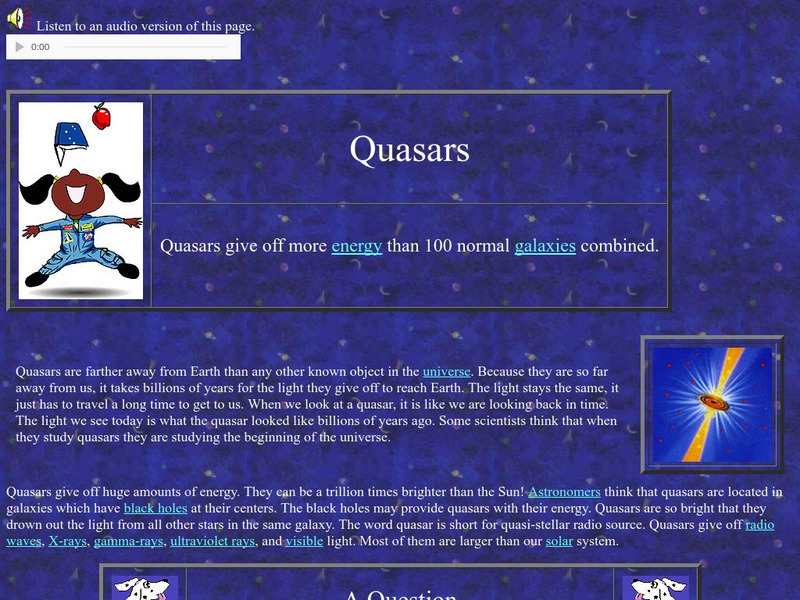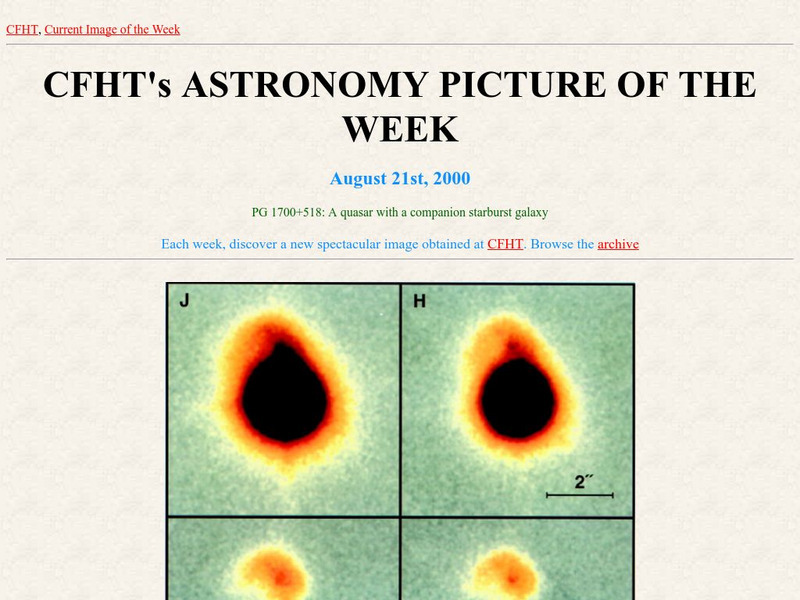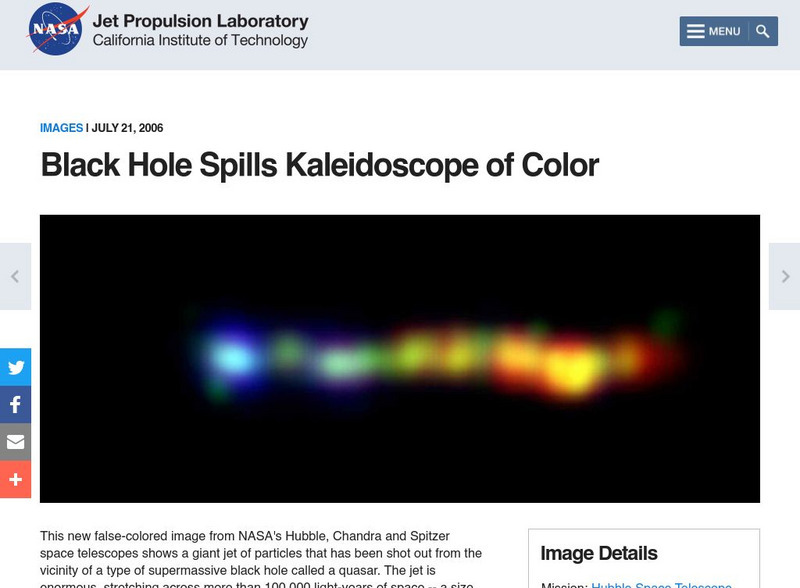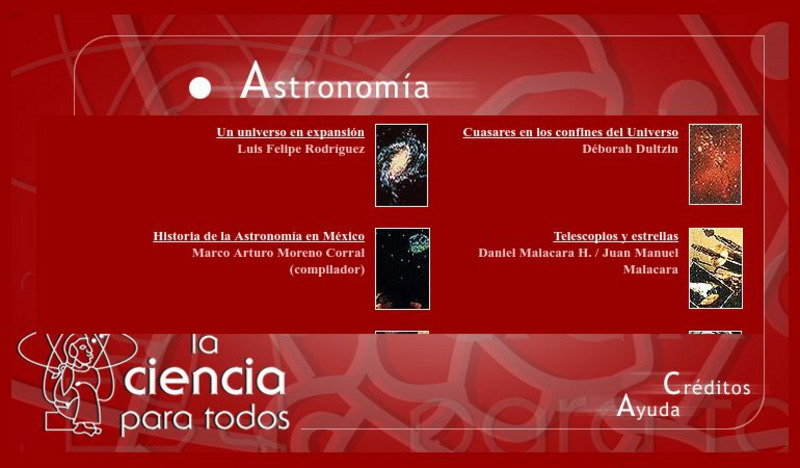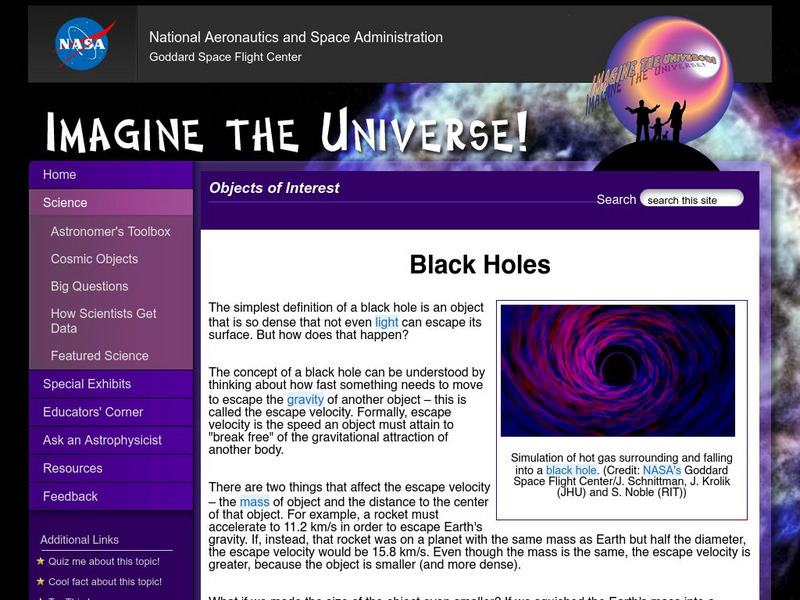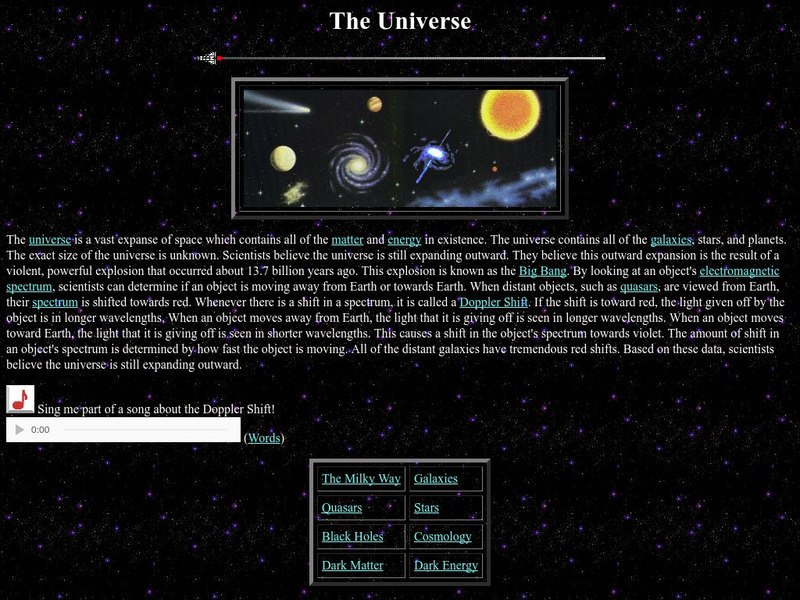Virginia Tech
Virginia Tech: Frequently Asked Questions About Quasars
This site from Virginia Tech provides answers to a list of questions about quasars.
NASA
Nasa Star Child: Quasars (Level 1)
Learn why quasars are the brightest things in the universe. Vocabulary words linked to a glossary of terms and a printable version are available.
Harvard University
Quasars and Active Galaxies
This site provides information about quasars and active galaxies. Includes a glossary of important terms.
Other
Sky Server: Quasars
This site from the SkyServer offers information as to what quasars are as well as provides links to strange objects, radio astronomy and research. This is a great sit to check out the brief but factual information on the subject.
University of Hawai'i
University of Hawaii Cfht: Quasars
Provides basic information related to quasars.
PBS
Pbs: Discovery of Quasars 1960
PBS offers a brief history of the discovery of quasars and the people involved.
Curated OER
Sky Server: Quasars
This site from the SkyServer offers information as to what quasars are as well as provides links to strange objects, radio astronomy and research. This is a great sit to check out the brief but factual information on the subject.
Ministerio de Educación (Spain)
Ministerio De Educacion: Cuasares Y Otras Galaxias Activas Modulo Vii Unit 3
In this module you can learn about the active galaxies, quasars and the effect of the gravitational lens.
NASA
Nasa: Black Hole Spills Color
Under the heading, "Black Hole Spills Kaleidoscope of Color" this site examines specific details of an image displaying the "supermassive black hole called a quasar."
California Institute of Technology
Spitzer Science Center: Gorilla Black Hole in the Mist
The Gorilla Black Hole in the Mist image features a distant galaxy with a quasar and a super-massive black hole. In addition, a detailed textual overview explains various specifics of the picture.
Instituto Latinoamericano de la Comunicacion Educativa
La Ciencia Para Todos: Astronomia
In this site you will find several Astronomy topics such as: the expansion of the Universe, history of Astronomy in Mexico, quasars in the confine of the Universe and telescopes and stars.Read phonetically
Other
Sky Server: Scavenger Hunt
In this site, from the SkyServer of the Sloan Digital Sky Survey users hunt for stars, galaxies, quasars, asteroids and meteors. Learn what they look like and how to find them.
Other
Sloan Digital Sky Survey: Sky Map
This astronomical survey by the Sloan Digital Sky Survey is poised to be one of the most ambitious ever undertaken. When completed, it will provide detailed images covering more than a quarter of the sky, and almost a million galaxies...
Georgia Department of Education
Ga Virtual Learning: Galaxies, the Milky Way and Beyond
In this interactive tutorial students will explore galaxies. Learn what the Milky Way Galaxy is like, how various galaxies are grouped into clusters and superclusters and why those particular galaxies clump together.
NASA
Nasa Star Child: Comets (Level 1)
Younger students learn why comets race through the sky as well as related vocabulary words and meanings.
Wikimedia
Wikipedia: The Black Hole
This site examines the black hole as an object in astrophysics. Delve into this comprehensive resource that covers this concept from its history, to qualitative physics, the reality of black holes, mathematical physics and more.
American Association of Physics Teachers
Com Padre Digital Library: Physics to Go: Explore Physics on Your Own
Contains a full physics curriculum with links to games, webcasts, and activities. By creating a free account, students and teachers can create their own personal collection of resources.
National High Magnetic Field Laboratory
Magnet Academy: Timeline of Electricity and Magnetism: 1960 1979
Computers evolve into PCs, researchers discover one new subatomic particle after another and the space age gives our psyches and science a new context.
NASA
Nasa: Imagine the Universe: Black Holes
Learn what black holes are and the myths that surround them.
Space Telescope Science Institute
Hubblesite: News Center Release Archive
This site from Hubblesite has a very long list of Hubble Space Telescope Images listed by subject. General categories of subjects include Solar System, Stars, Nebulae, Star Clusters, Novae, Supernovae, Stellar evolutionn, Galaxies, and...
NASA
Nasa Star Child: The Universe (Level 2)
This site provides a description of the universe and what it contains. Includes links to definitions, activities, and an audio song. Printable version available.
NASA
Nasa Star Child: Star Child
StarChild from NASA defines and describes the Solar System in a simple and easy-to-understand manner. The website is broken down into two versions for the student, grade school and junior high.
NASA
Viewing the Violent Universe: What Are Gamma Rays?
The universe produces a broad range of light, only a fraction of which is visible to our eyes. Gamma rays are nonvisible light, which also includes x-rays, ultraviolet light, infrared radiation, and radio waves.



